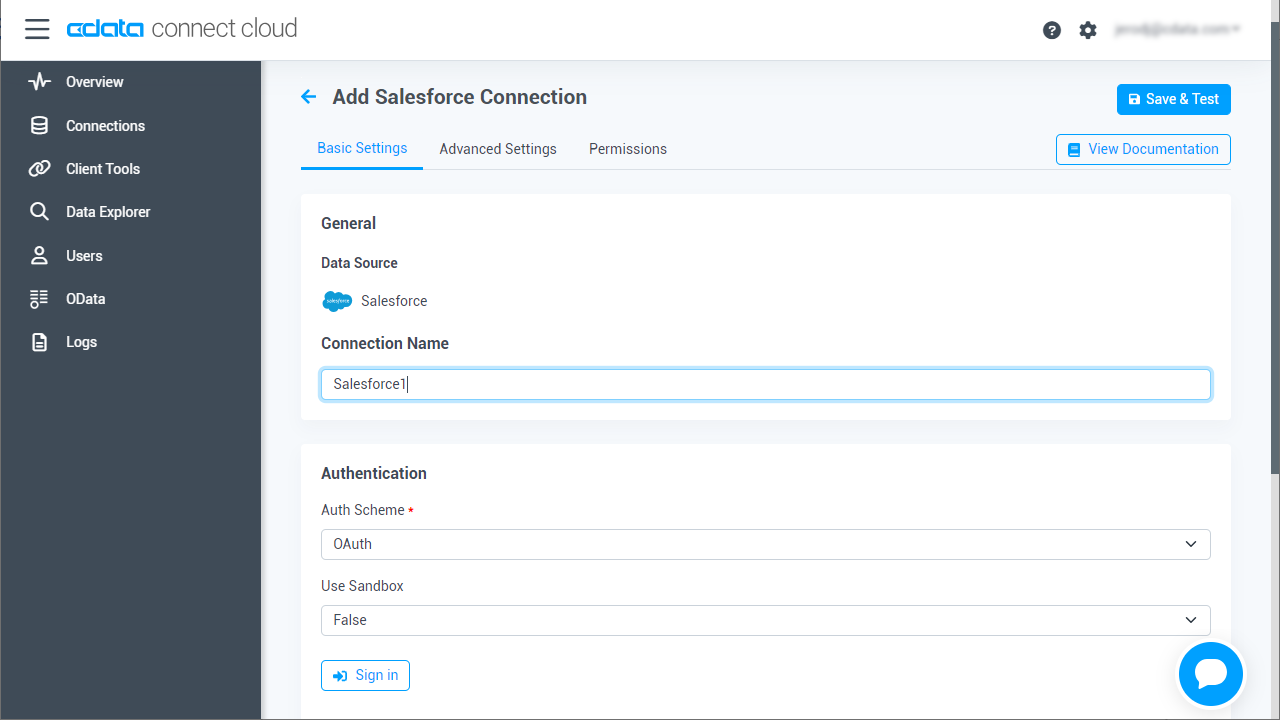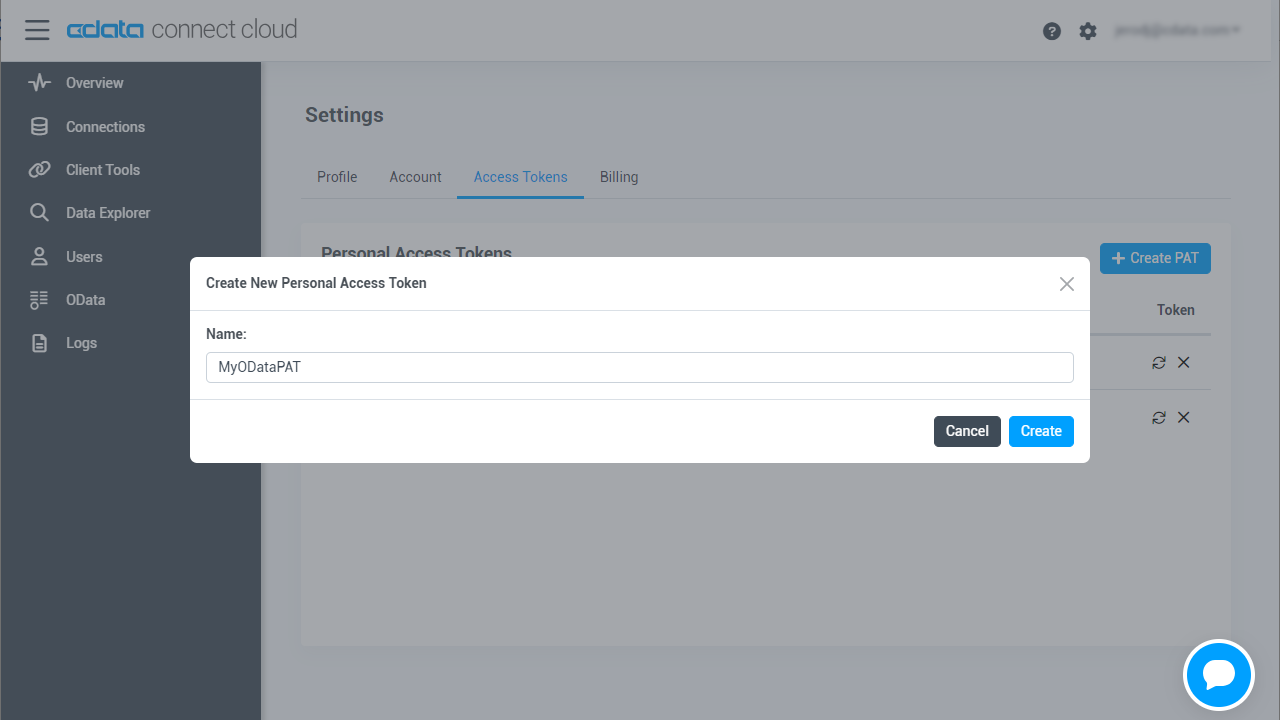Discover how a bimodal integration strategy can address the major data management challenges facing your organization today.
Get the Report →Build Amazon Athena-Connected Apps in Choreo
Use CData Connect Cloud to connect to Amazon Athena Data from Choreo and build custom apps using live Amazon Athena data.
The Choreo platform from WS02 is a versatile platform designed for low-code and cloud-native engineering. Developers, even those without advanced coding skills, can leverage Choreo's user-friendly low-code environment to simplify application development. When combined with CData Connect Cloud, users gain immediate cloud-to-cloud access to Amazon Athena data for applications. This article details the process of connecting to Amazon Athena using Connect Cloud and building an application with real-time access to Amazon Athena data within Choreo.
CData Connect Cloud delivers a pure cloud-to-cloud interface for Amazon Athena, enabling you to construct applications within Choreo that utilize live Amazon Athena data data, all without the need for data replication to a natively supported database. With its built-in optimized data processing capabilities, CData Connect Cloud efficiently directs all supported SQL operations, including filters and JOINs, directly to Amazon Athena, capitalizing on server-side processing to swiftly provide the requested Amazon Athena data.
Configure Amazon Athena Connectivity for Choreo
Connectivity to Amazon Athena from Choreo is made possible through CData Connect Cloud. To work with Amazon Athena data from Choreo, we start by creating and configuring a Amazon Athena connection.
- Log into Connect Cloud, click Connections and click Add Connection
![Adding a Connection]()
- Select "Amazon Athena" from the Add Connection panel
![Selecting a data source]()
-
Enter the necessary authentication properties to connect to Amazon Athena.
Authenticating to Amazon Athena
To authorize Amazon Athena requests, provide the credentials for an administrator account or for an IAM user with custom permissions: Set AccessKey to the access key Id. Set SecretKey to the secret access key.
Note: Though you can connect as the AWS account administrator, it is recommended to use IAM user credentials to access AWS services.
Obtaining the Access Key
To obtain the credentials for an IAM user, follow the steps below:
- Sign into the IAM console.
- In the navigation pane, select Users.
- To create or manage the access keys for a user, select the user and then select the Security Credentials tab.
To obtain the credentials for your AWS root account, follow the steps below:
- Sign into the AWS Management console with the credentials for your root account.
- Select your account name or number and select My Security Credentials in the menu that is displayed.
- Click Continue to Security Credentials and expand the Access Keys section to manage or create root account access keys.
Authenticating from an EC2 Instance
If you are using the CData Data Provider for Amazon Athena 2018 from an EC2 Instance and have an IAM Role assigned to the instance, you can use the IAM Role to authenticate. To do so, set UseEC2Roles to true and leave AccessKey and SecretKey empty. The CData Data Provider for Amazon Athena 2018 will automatically obtain your IAM Role credentials and authenticate with them.
Authenticating as an AWS Role
In many situations it may be preferable to use an IAM role for authentication instead of the direct security credentials of an AWS root user. An AWS role may be used instead by specifying the RoleARN. This will cause the CData Data Provider for Amazon Athena 2018 to attempt to retrieve credentials for the specified role. If you are connecting to AWS (instead of already being connected such as on an EC2 instance), you must additionally specify the AccessKey and SecretKey of an IAM user to assume the role for. Roles may not be used when specifying the AccessKey and SecretKey of an AWS root user.
Authenticating with MFA
For users and roles that require Multi-factor Authentication, specify the MFASerialNumber and MFAToken connection properties. This will cause the CData Data Provider for Amazon Athena 2018 to submit the MFA credentials in a request to retrieve temporary authentication credentials. Note that the duration of the temporary credentials may be controlled via the TemporaryTokenDuration (default 3600 seconds).
Connecting to Amazon Athena
In addition to the AccessKey and SecretKey properties, specify Database, S3StagingDirectory and Region. Set Region to the region where your Amazon Athena data is hosted. Set S3StagingDirectory to a folder in S3 where you would like to store the results of queries.
If Database is not set in the connection, the data provider connects to the default database set in Amazon Athena.
![Configuring a connection (Salesforce is shown)]()
- Click Create & Test
- Navigate to the Permissions tab in the Add Amazon Athena Connection page and update the User-based permissions.
![Updating permissions]()
Add a Personal Access Token
If you are connecting from a service, application, platform, or framework that does not support OAuth authentication, you can create a Personal Access Token (PAT) to use for authentication. Best practices would dictate that you create a separate PAT for each service, to maintain granularity of access.
- Click on your username at the top right of the Connect Cloud app and click User Profile.
- On the User Profile page, scroll down to the Personal Access Tokens section and click Create PAT.
- Give your PAT a name and click Create.
![Creating a new PAT]()
- The personal access token is only visible at creation, so be sure to copy it and store it securely for future use.
With the connection configured, you are ready to connect to Amazon Athena data from Choreo.
Connect to Amazon Athena from Choreo
The steps below outline connecting to CData Connect Cloud from Choreo to create a new application with access to live Amazon Athena data.
Creating a Construct
-
Sign in to the Choreo platform. Note: This article is from the perspective of an Anonymous user.
![Displaying Choreo landing page]()
-
Select Components from the left sidebar and then click +Create. Next, choose Manual Trigger and then Start from scratch.
![Selecting manual trigger]()
-
Give the manual trigger a Name and Description and click Create.
![Creating manual trigger]()
-
After the trigger is created, click on Edit Code.
![Clicking Edit Code]()
-
The Ballerina Low-Code IDE is displayed. Choreo automatically generates a construct in the low-code diagram
view. Delete this construct by highlighting it and clicking on the trashcan icon.
![Showing Ballerina Low-Code IDE]()
-
Click the + icon towards the top of the screen and select Main from the Add Constructs
toolbar on the right. In the following Function Configuration form, click Save.
![Adding a Construct]()
Adding the CData Connect Cloud Connector
- Click the + icon between the Start and End ellipses and click Connector.
- In the Connectors sidebar on the right, search for "CData". Click CData Connect to open the Connector settings pane.
-
In the Connector settings pane, enter the configuration settings:
- Enter an Endpoint Name for your use. In this example, we use "connectEndpoint".
- In the User field, enter the email address of the CData Connect Cloud user, wrapped in quotation marks (for example, "user@cdata.com").
- In the Password field, enter the PAT you generated earlier, wrapped in quotation marks (for example, "SampleToken").
- After clicking Save, the low-code editor appears with the CData Connect Cloud logo.




Adding a Query Action
- Click the + icon between the new and end shapes, select Action, and then select our existing connector endpoint.
- Select query for the connector Operation. There is now an Action pane on the right.
- Enter a SQL query to retrieve Amazon Athena data as the sqlQuery parameter for the query. For example:
SELECT * FROM AmazonAthena1.AmazonAthena.Customers LIMIT 10- When writing the query, be sure to specify the Connection Name as the catalog and Data Source Name as the schema. For example, AmazonAthena1.AmazonAthena.
- These parameters appear on the Connections page of your CData Connect Cloud dashboard.


Iterating over Amazon Athena Data
- Click the Show Source icon in the top right of the code editor.
- Add an import statment to import the ballerina/io library:
import ballerina/io;
- Next, add a from statement after the query action to iterate through the results of the SQL query:
- The code for the construct will now look similar to this:
- Click Save to save the action. The diagram should now look similar to this:
check from record{} result in resultStream
do {
io:println("Full Customers details: ", result);
};
import ballerinax/cdata.connect;
import ballerinax/cdata.connect.driver as _;
import ballerina/io;
public function main() returns error? {
connect:Client connectEp = check new (user = "connect_cloud_username", password="connect_cloud_pat");
stream<record {}, error=""?> resultStream =
connectEp->query(sqlQuery = `SELECT * FROM AmazonAthena1.AmazonAthena.Customers LIMIT 10`);
check from record{} result in resultStream
do {
io:println("Full Customers details: ", result);
};
}

Deploying the Program
Once you have added all of your desired actions to your program, follow these steps:
- Commit and push your final source code in the web editor and sync those changes with the Choreo platform.
- Click Deploy in the left navigation bar of the Choreo Console.
- Under Build Area, click Configure & Deploy to deploy your program.
- When prompted, enter the same CData Connect Cloud username and password that you used earlier and click Deploy.

You have now created an application with access to live Amazon Athena data in Choreo.
Get CData Connect Cloud
For more information about using Choreo with CData Connect Cloud, see the CData Connect Ballerina Guide. To get live data access to 100+ SaaS, Big Data, and NoSQL sources directly from your cloud applications, try CData Connect Cloud today!

















